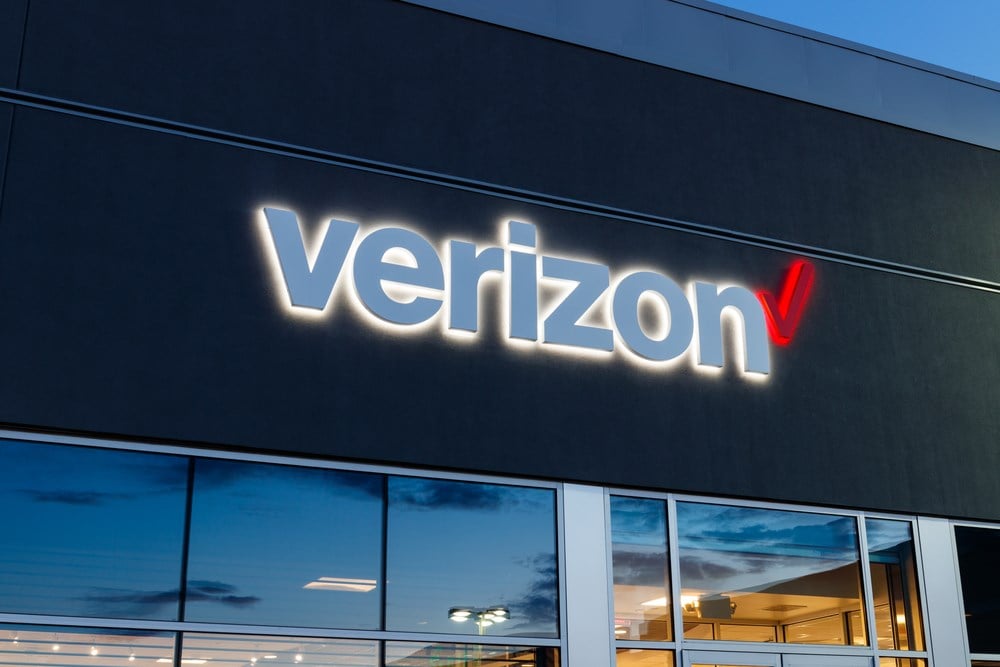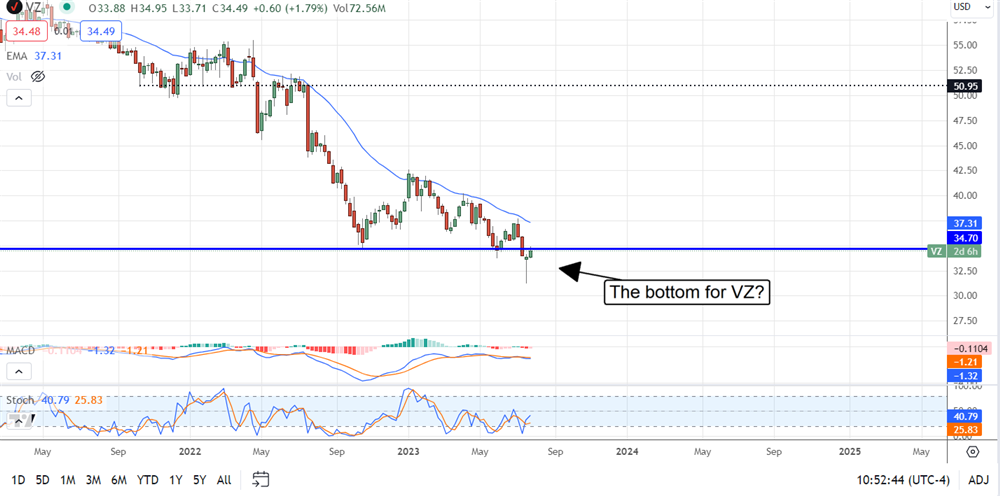
The price action in Verizon (NYSE: VZ) stock has been trying hard to put in a bottom, and the factors supporting the move are still in place. Verizon trades at a ridiculously low level for almost no reason, paying a safe and growing dividend. The dividend is among the most appealing aspects of the stock because it is worth more than 7.5%, with shares trading at a deep discount to their historical value. But don’t take my word for it.
The analysts and institutional activity suggest that the sell-side is interested in Verizon for these reasons.
The institutions have been buying Verizon on balance for 2 years. Their activity netted over $12 billion in shares and outpace selling by more than 2:1. The activity noticeably spiked in Q3 2023 when the shares moved to a new long-term low.
That low coincides with a volume spike driven by the institutions and analysts.
Analysts are among the most bullish factors supporting this stock and the idea of a bottom. There are 14 analysts with ratings on the stock, and they rate it at Hold. Fourteen is not a huge number, the most closely followed stocks have upward of 30 analysts following them, but 14 is significantly large.
More importantly, the consensus price target, which has been edging lower, is still more than 25% above the current price action, and even the lowest price target assumes some upside.
The low price target was set by Wells Fargo just days before the Q2 release and is $136. That’s about 4.5% above the price action and would put the market above critical support.
Verizon Price Firms On Mixed Results: Reaffirms Guidance
Verizon had a mixed quarter, but the report has some fine details. The revenue fell 3.6% YOY and missed the consensus estimate by 210 basis points, but margin and earnings were strong. The revenue was driven by 418,000 net additions driven by 3.8% growth in wireless and high-speed fiber optic.
Fios net adds grew 20K YOY or up 55% on a YOY basis, evidence of growing momentum for high-speed fiber optic connections.
The margin news is also mixed but favorable to shareholders. The company’s margin contracted compared to last year but less than expected, leaving GAAP and adjusted EPS down compared to last year.
The good news is that the adjusted $1.21 is $0.04 better than expected, and other factors mitigate the decline. Among them is the 0.8% increase in consolidated adjusted EBITDA margin and the surge in cash and FCF.
Cash and FCF increases are related to inventory charges and lower upgrade volumes; YTD FCF grew to $8 billion from last year’s $7.2 and allowed for some debt reduction.
The guidance isn’t all that exciting but favors higher share prices. The company reiterated its outlook for FY2023, including adjusted EPS from $4.55 to $4.85.
That brackets the consensus $4.66 with room for ample upside. The salient point is that earnings are stable relative to the outlook, there is no cause for the analyst to lower their performance targets, and the dividend is safe.
Verizon’s High-Yield Looks Buyable
Verizon’s high 7.6% yield looks buyable because it is only 55% of earnings at the mid-point of guidance, and cash flow is sufficient to cover it. The company carries debt but is managed and offers no significant red flags.
Investors might not expect to see large distribution increases, but there is a high probability low single-digit increases will continue. The company has increased for 18 years and is on its way to Dividend Aristocrat status.
The VZ price action firmed following the Q2 results. The market is showing a solid Hammer signal suggesting the market has hammered out a bottom.
The market is struggling with resistance near $34.50, which could be a problem. A deeper decline may be brewing if the price can’t get above that level. However, given the results and the analyst's sentiment, a move above critical resistance seems likely. In that scenario, VZ stock may not rally strongly, but it should rebound and reenter its trading range.







